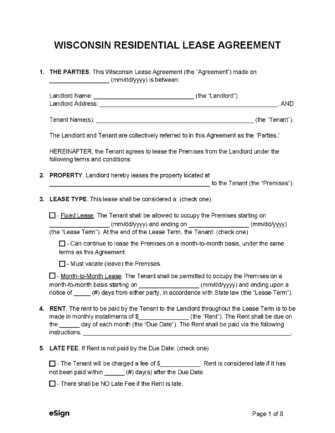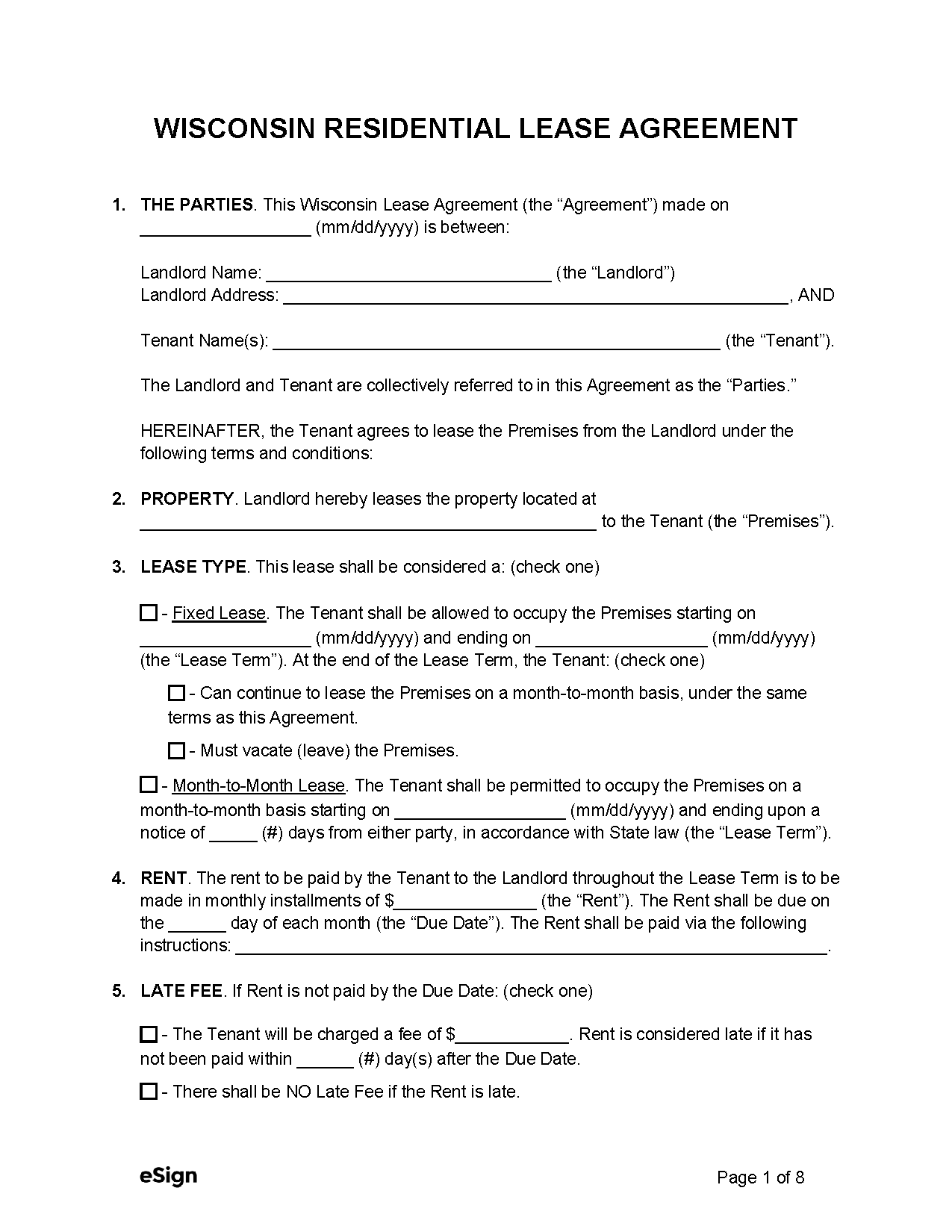
A Wisconsin lease agreement is a contract between a landlord and tenant that defines the rental terms for a residential or commercial tenancy. Before signing a rental agreement, the tenant and landlord will discuss the length of the term, the rent amount, security deposit requirements, rules of the property, and the obligations of both parties.
A Wisconsin lease agreement is a contract between a landlord and tenant that defines the rental terms for a residential or commercial tenancy. Before signing a rental agreement, the tenant and landlord will discuss the length of the term, the rent amount, security deposit requirements, rules of the property, and the obligations of both parties.
PDF Download
A Wisconsin lease agreement is a contract between a landlord and tenant that defines the rental terms for a residential or commercial tenancy. Before signing a rental agreement, the tenant and landlord will discuss the length of the term, the rent amount, security deposit requirements, rules of the property, and the obligations of both parties.
4.7 | 53 Ratings Downloads: 6,145
Rental Application – A form filled out by lease applicants that provides landlords with contact information, rental history, and consent for a background check.
Maximum Amount ($) – State law does not set a maximum amount for security deposits.
Collecting Interest – There are no legal requirements for collecting interest on security deposits in Wisconsin.
Returning to Tenant – Security deposits must be returned to tenants within 21 days of the termination of the rental agreement. [6]
Itemized List Required? – Yes, if any amount of the tenant’s security deposit is withheld for damages, the landlord must send a list of all damages and the amount withheld. [7]
Separate Bank Account? -Nothing in the state statutes requires landlords to keep security deposits in a separate bank account.
General Access – Landlords are permitted to access the rental property to perform their various duties during reasonable hours and with at least 12 hours’ notice. [8]
Immediate Access – Landlords can enter the premises without notice for emergencies or if the tenant is absent and immediate access is necessary to protect the property from damage. [9]
Grace Period – There is no rent grace period established in state statutes.
Maximum Late Fee ($) – Landlords may only charge a late fee if it is mentioned in the rental agreement, but state law does not set a maximum amount. [10]
Withholding Rent – Tenants can take certain actions if the landlord fails to maintain the habitability of the premises, but they may not withhold rent. [11]
Non-Payment of Rent – Landlords can use a 5-day notice to pay or quit when a tenant is late paying rent. [12]
Non-Compliance – When a tenant fails to comply with the lease, landlords can serve a 5-day notice to comply or quit. [13]
Lockouts – Landlords may not prevent a tenant from accessing their rental property except through a legal eviction process. [14]
Leaving Before the End Date – If the tenant leaves before the lease has terminated and still owes rent, the landlord can recover rent and damages. [15]
Month-to-Month – Monthly tenancies can be terminated by either party as long as 28 days’ notice is provided. [17]
Unclaimed Property – Any of the tenant’s unclaimed property can be assumed by the landlord to be abandoned and may be disposed of as they see fit. [18]